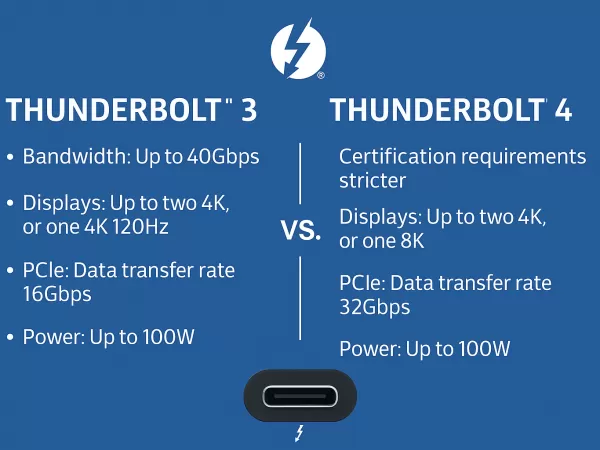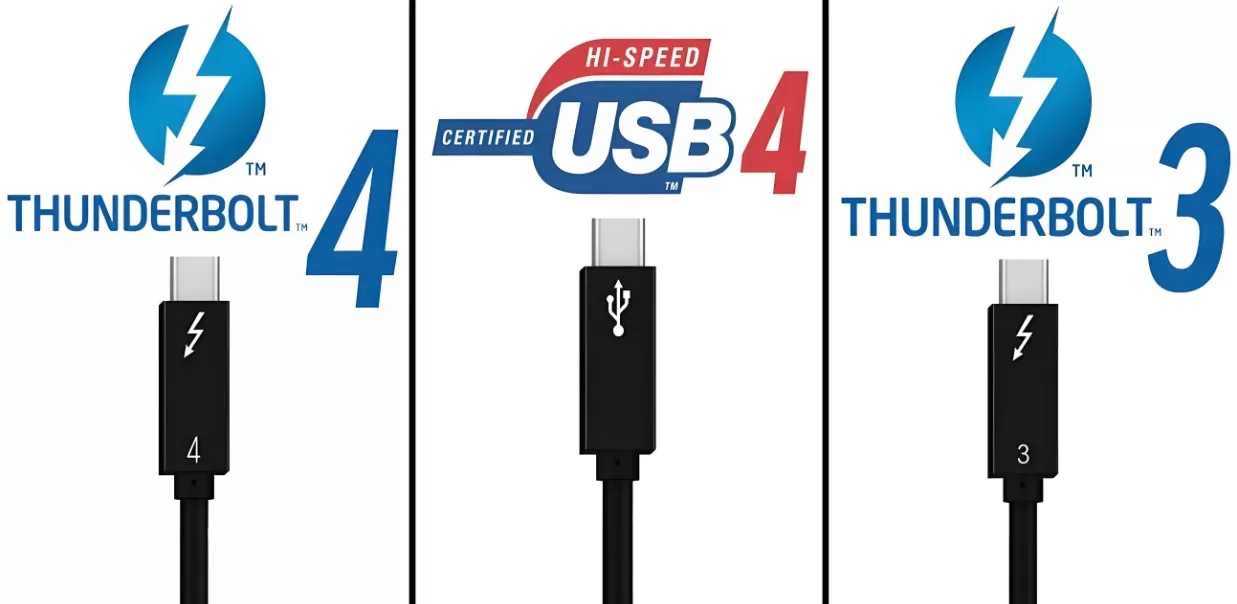Thunderbolt™ 3 vs. Thunderbolt™ 4: Understanding the Key Differences

In the fast-paced world of connectivity, Thunderbolt™ technology has long been a benchmark for high-speed data transfer, video output, and device charging. With Thunderbolt™ 4 now widely adopted, many users wonder how it compares to its predecessor, Thunderbolt™ 3. While the core bandwidth remains unchanged, Thunderbolt™ 4 introduces stricter certification requirements, ensuring a more reliable and versatile user experience.
Thunderbolt™ 3: The Previous Champion
Since its debut in 2014, Thunderbolt™ 3 has been the gold standard in connectivity. It transitioned to the USB-C connector, doubling the bandwidth of its predecessor to 40Gbps (two bidirectional 20Gbps channels). This leap made it one of the fastest interfaces available, powering dual 4K displays at 60Hz or a single 4K display at 120Hz.
By 2017, major brands like Dell, HP, and Lenovo had integrated Thunderbolt™ 3 into their laptops and desktops, cementing its dominance in the market. With support for up to 100W power delivery and significantly reduced power consumption compared to Thunderbolt™ 2, TB3 quickly became a preferred choice for professionals and consumers alike.
Thunderbolt™ 4: Stricter Standards, Smarter Performance
Unlike a revolutionary leap, Thunderbolt™ 4 builds upon the solid foundation of TB3 with enhanced certification requirements. Every TB4-certified laptop must support:
Dual 4K displays or a single 8K display
Data transfer speeds up to 32Gbps for PCIe-based devices, enabling external storage performance of up to 3000MB/s
Full compatibility with previous generations of Thunderbolt™ and USB devices
This eliminates the confusion some consumers faced with Thunderbolt™ 3, where supported display outputs varied between devices.
Thunderbolt™ 4 vs. USB4: What’s the Difference?
Both Thunderbolt™ 4 and USB4 use the USB-C connector, making them visually identical. However, TB4 ports are marked with a small lightning-bolt icon, distinguishing them from standard USB-C or fast-charging ports. Thunderbolt™ 4 guarantees higher minimum requirements, while USB4 performance may vary depending on device implementation.

Enhanced Visual Experience
While maintaining a maximum bandwidth of 40Gbps, Thunderbolt™ 4 improves single-display performance. Where TB3 supported resolutions up to 5K, TB4 now enables 8K output on a single display, delivering a next-generation visual experience.
Conclusion
Thunderbolt™ 4 may not redefine connectivity speeds, but it provides stronger assurance of consistent performance across certified devices. As the industry transitions alongside USB4, Thunderbolt™ 4 ensures that professionals and everyday users alike benefit from faster, more reliable, and future-ready connections.